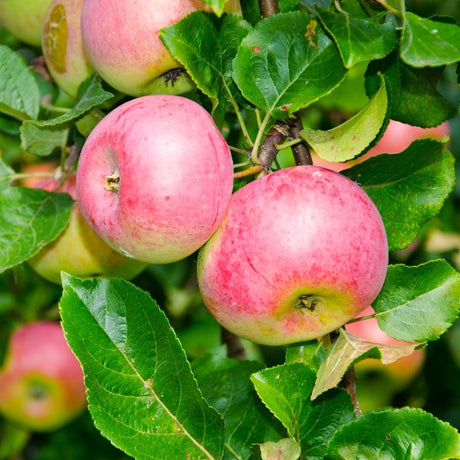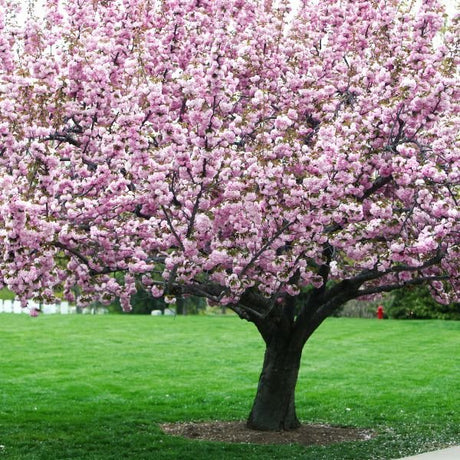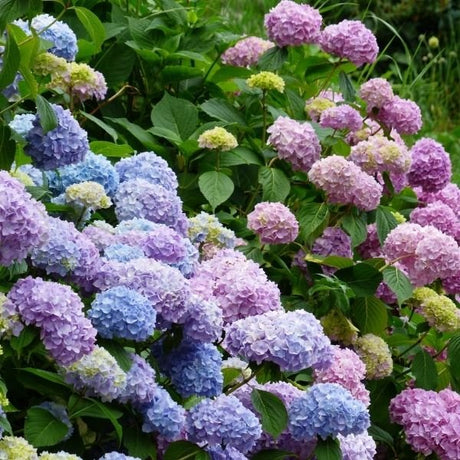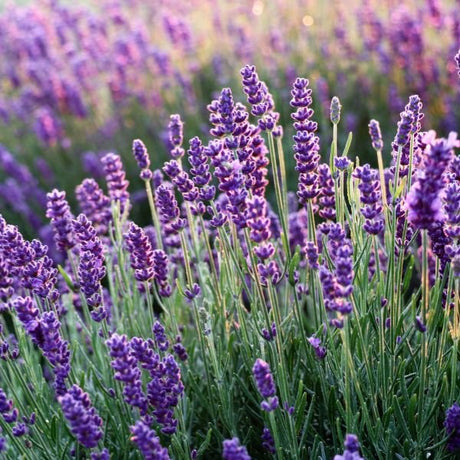Heritage Birch Tree
Betula nigra 'Cully'
- Stay Protected with Plant Sentry ™
Heritage Birch Tree - #3 Container 3-4 Feet Multi Stem is backordered and will ship as soon as it is back in stock.
Plant Sentry™
Plant Sentry™
Plant Sentry is designed to protect both consumers and the nursery trade from invasive plant pests and diseases. Sites that display the Plant Sentry protection badge are protected from consumers buying and nurseries shipping material carrying invasive pests and diseases.
This proprietary eCommerce software prevents the shipment of a restricted plant to each state. The Plant Sentry system includes a shipment certification program. The Plant Sentry Compliance Officer works closely with NatureHills.com and each nursery or fulfillment center to ensure only compliant plants are sold to customers.
Click Here to learn more

Delivery and Shipping
Delivery and Shipping
Shipping
To obtain a more accurate shipment time-frame, simply enter your zip code in the “Find Your Growing Zone” box to the right. Our plants are grown all over the country and lead time on items may be different because of this. Once your order is placed, you will also receive the specific shipment time-frame information as part of your order confirmation. Once an item ships, you will receive shipment notification and tracking numbers, so you can follow along while your plant travels to your doorstep. We use FedEx, UPS, or USPS at our discretion.
Due to winter weather we have put a hold on shipping to the areas shown below in grey. You can still order now and we will ship the plant to you during an appropriate time for your zone.
Standard Shipping Rates
At Nature Hills we handle, package and ship the products you order with the utmost care to ensure healthy delivery. Shipping and handling charges are calculated based on the tables below. Please note that some items include an additional handling surcharge, these will be noted on the item's product page.
| From | To | S&H |
|---|---|---|
| $0 | $19.99 | $24.99 |
| $20 | $49.99 | $29.99 |
| $50 | $69.99 | $34.99 |
| $70 | $99.99 | $39.99 |
| $100 | $129.99 | $44.99 |
| $130 | $149.99 | $48.99 |
| $150 | $150+ | Approx 28% |
Click here to see our full rates
Understanding Plant Options
Nature Hills offers plants in two main formats:
- Container Plants: Grown in pots with soil, sized by container volume and plant age
- Bare Root Plants: Dormant plants without soil, sized by height measurements
Container Plant Sizes
Container sizes indicate plant age and growing capacity rather than liquid volume equivalents. Our containers follow industry-standard nursery "trade gallon" specifications, which differ from standard liquid gallon measurements.
Young Plants (6 months to 18 months old)
| Container Size | Actual Volume | Metric Equivalent |
|---|---|---|
| 2" x 2" x 3" | 0.18 - 0.21 dry quarts | 0.20 - 0.23 dry liters |
| 4" Container | 0.31 - 0.87 dry quarts | 0.35 - 0.96 dry liters |
| 4.5" Container | 0.65 dry quarts | 0.72 dry liters |
| 6" Container | 1.4 dry quarts | 1.59 dry liters |
| 1 Quart | 1 dry quart | 1.1 dry liters |
| 5.5" Container | 1.89 dry quarts | 2.08 dry liters |
Established Plants (18 months to 2.5 years old)
| Container Size | Actual Volume | Metric Equivalent |
|---|---|---|
| 2 Quart | 2 dry quarts | 2.2 dry liters |
| #1 Container | 2.26 - 3.73 dry quarts | 2.49 - 4.11 dry liters |
| 5" x 5" x 12" | 3.5 - 4.3 dry quarts | 3.85 - 4.74 dry liters |
Mature Plants (2-4 years old)
| Container Size | Actual Volume | Metric Equivalent |
|---|---|---|
| #2 Container | 1.19 - 1.76 dry gallons | 5.24 - 7.75 dry liters |
| #3 Container | 2.15 - 2.76 dry gallons | 8.14 - 12.16 dry liters |
Large Plants (3-5 years old)
| Container Size | Actual Volume | Metric Equivalent |
|---|---|---|
| #5 Container | 2.92 - 4.62 dry gallons | 12.86 - 20.35 dry liters |
| #6 Container | 5.25 - 6.01 dry gallons | 23.12 - 26.42 dry liters |
| #7 Container | 5.98 - 6.53 dry gallons | 26.34 - 28.76 dry liters |
Bare Root Plants
Bare root plants are sold by height from the root system to the top of the plant. Plants may exceed minimum height requirements.
Common Sizes:
- Trees: 1 foot, 2 feet, 3 feet, 4 feet, 5 feet, 6 feet
- Shrubs & Perennials: 1 foot, 18 inches, 2 feet
Important Notes
Container Volume Specifications
- Trade Gallon Standard: Our containers follow industry-standard "trade gallon" specifications established by the American National Standards Institute (ANSI Z60.1) for nursery stock
- Volume Variations: Actual soil volume may vary due to plant root systems and growing medium settlement
- Age Indicators: Container size primarily indicates plant age and maturity rather than liquid volume equivalents
Growing Conditions
- Plant size can vary based on variety and growing conditions
- Container size helps indicate plant maturity and establishment level
- Larger containers generally mean more established root systems and faster landscape establishment
Seasonal Availability
- Bare root plants are available seasonally when dormant
- Container plants are available throughout the growing season
- Specific varieties may have limited availability in certain sizes
Questions?
For questions about specific plant sizes or availability, please contact our plant experts who can help you choose the right size for your landscape needs.
Plant Highlights
Heritage Birch Tree highlights at a glance!
Specifications
Specifications
-
Brand
-
Botanical Name
-
Growing Zones
-
Mature Height
-
Mature Spread
-
Sun ExposureFull Sun, Partial Shade
-
Moisture
-
Soil
-
Growth RateFast
-
Fall Color
-
Pollinator Friendly
-
Pruning Time
-
Bloom PeriodEarly Spring
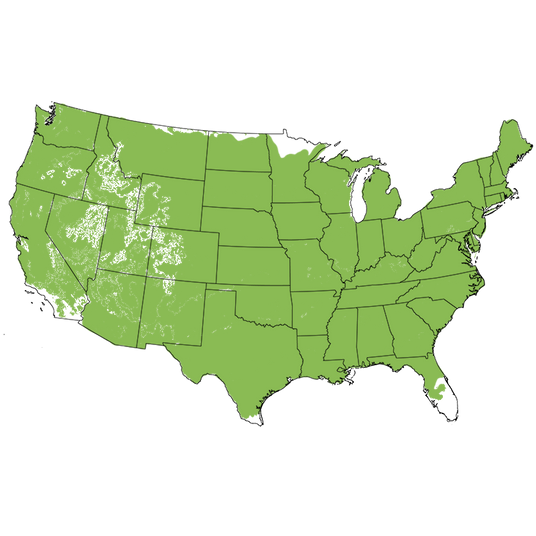
Growing Zones 4-9
Fast-Growing, Ornamental Bark Heritage Birch Tree
- Very Fast Growing Birch Tree
- Highly Ornamental, Peeling Bark Displays Creamy White, Pink & Tan
- Lightest Bark of the River Birches
- Darkest Green Leaves of the River Birches
- Leaves are Very Shiny
- Clear Yellow Fall Color in Most Years
- Beautiful Growth Habit
- Grow as Single Stem or Multi Stemmed Tree Clump
- Useful as A Specimen, Screening, Natural Groups, Shelterbelts
- Can Grow in Moist Soils
- Can Grow in Full Sun or Partial Shade
- Rarely Bothered by Deer
For a wonderful visual interest, try one of the prettiest, fast-growing shade trees available on the market. Heritage Birch tree (Betula nigra 'Cully') grows very fast to provide airy, breezy shade for you and your family.
Heritage Birch can grow very quickly and young trees can add 3 or 4 feet in a single season!
Heritage is a cultivar of a native River Birch tree with exquisite, peeling, exfoliating bark that is lighter colored than the species. It would do well as a specimen planting for your yard, especially in low areas, or along a pond or stream.
You’ll delight in the beautiful tones of creamy white and pink peeling back to expose tan and cinnamon colors. It starts to exfoliate as the trunks reach a 2-3 inch caliber diameter and larger.
The shaggy look is sophisticated, handsome, and a bit rugged. It works beautifully with all styles of architecture, from contemporary to traditional. Consider this the perfect accent in a naturalized, rustic setting.
The rough-textured bark certainly makes a wonderful contrast to the shiny, dark green leaves. The rustling, gleaming foliage lofts and sways, catching the slightest breeze. It turns a clear golden-yellow in fall.
Heritage is more insect and disease-resistant than other Birch varieties. It’s a carefree, hardy tree and an excellent choice for year-round interest in your yard.
Grow them as a single stem plant and they will become narrow and pyramidal in outline. They can also be grown in multiple trunk, clump form plants and the overall outline may be a bit broader than a single stem. Even multiple trunk plants will grow taller than wide.
Using native trees in your landscape design has several benefits. Many types of birds value the Heritage River Birch for nesting, seed, and cover. Several butterfly species also value it as a larval food source. But deer tend to leave it alone.
Get started on shade with help from the expert growers at Nature Hills. Place your order for the Heritage Birch tree today.
How to Use Heritage Birch Tree in the Landscape
This versatile tree brings a lot of visual interest, from the incredible bark to its lovely, uniform growth habit. Landscape architects for commercial projects are using them to create excellent natural groupings.
For a natural grouping, we recommend that you include both single-stem and multiple-trunk trees. Plant them 20 - 40 feet apart and vary the spacing between trees.
Try them on a raised berm to heighten the impact. As a bonus, they grow quickly to provide shade and a welcome privacy screen.
This is the tree to spend money on with exterior lighting. Shoot the light upward, along the length of the trunk, and up into the canopy. You’ll highlight the look of the beautiful bark to bring your yard to life, even at night.
Don't forget to include some in your shelterbelts in front of larger evergreen trees. The vibrant bark and fall color will really pop against a backdrop of evergreen trees.
Heritage Birch looks amazing along the edge of a pond or water feature. The reflection is so beautiful, it soothes the soul.
Because this tree can tolerate moist soils, it should be strongly considered to include in Rain Gardens in low areas of your yard. They are designed to trap water runoff from roofs and streets.
Tree roots filter the potentially polluted water before it drains directly into the storm sewer and onto local rivers and streams. Use Heritage Birch in the Mesic—or middle—Zone of the Rain Garden planting.
Municipalities are even using them as street trees. They'll tolerate extremely tough conditions without a lot of care, fuss, or muss. Try them yourself!
#ProPlantTips for Care
Heritage Birch is highly adaptable and is easy to grow and maintain. It grows in wet soils and clay soil. Plant in full sun or partial shade. It will need at least 4 hours of direct sunlight a day.
Although widely adaptable, Heritage Birch trees prefer slightly acidic soil. Test your soil pH and add Sulphur before planting if the pH is higher than 6.0.
If your soil is high pH alkaline, add a few handfuls of peat moss to the planting soil backfill when planting. Feed it with an acid-loving plant fertilizer in early spring.
Establish your young trees by providing a regular amount of water, especially in hot, dry areas. Check the soil moisture by sticking your finger into the soil near the tree up to the second knuckle. Is the soil still moist? Skip watering that day. Is it getting dry? Give the entire root system a long drink.
Once established after the first few seasons, Heritage tolerates some drought. Whenever it gets extremely dry, protect your investment by dropping the hose underneath, Keep your tree stress-free with a good soaking.
Provide a thick layer of pine mulch over the root system to help maintain moist soil. Leave at least 6 inches free and clear around the trunks.
Create a temporary fence around your new tree if you live in deer country, or where rabbits are present. You know that hungry animals will sample anything.
Use repellent spray the first day you plant and reapply according to the directions. That's cheap insurance for your landscape investment. Once the trees reach a good size, deer and rabbits tend to leave them alone.
Heritage Birch tree has a very fast growth rate, and you’ll want to keep the canopy balanced with strategic pruning. The main goal is to increase sunlight and air circulation into the interior of the canopy.
It’s best to wait until after the spring sap rises. Wait to prune after the tree leaves out in spring to avoid dripping sap.
For the best results, create a mulched planting bed for your new tree. You won’t stress about twig cleanup, and it makes fall cleanup of the small leaves a breeze.
Let ornamental Heritage River Birch from Nature Hills decorate your landscape. You’ll love the super-fast shade it provides. Order yours today!
Single Stem, Multi Stem, Shrub Form, Oh My!
Before you buy, make sure you know what you’re getting! Single-stem, multi-stem, and shrub forms are different so read a bit about which we’re currently offering below.
Single Stem:
These are plants that have one stem coming from the ground. Plants can also be considered single-stem when lower branches are removed to raise the height of the branching. Sometimes, you will hear single-stem referred to as Tree Form.
Multi Stem:
These are plants with 2 or more stems planted together in the ground in close proximity to form a clump. There are times when multi-stems are formed by a tree that branches at the soil line with more than one main stem.
Shrub Form:
These are bushy plants with many stems and branches close to the ground. They are referred to as shrubs or bushes and are often shorter than their tree forms.






